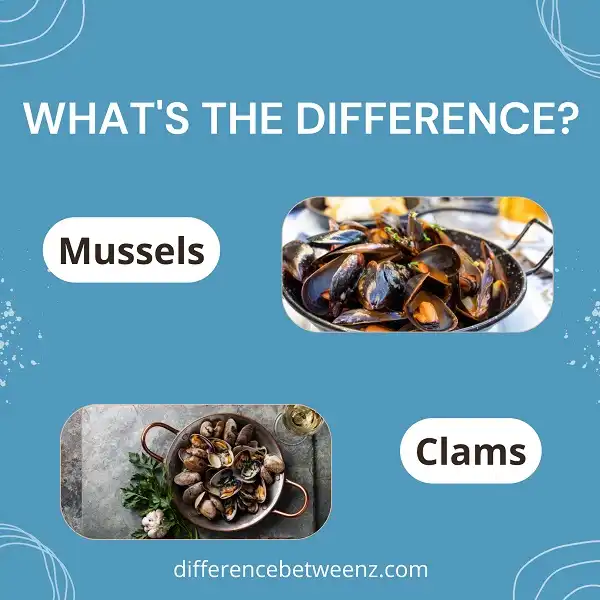Both mussels and clams are bivalves, meaning they have two shells. However, there is a big difference between the two. Mussels attach to hard surfaces, such as rocks, using byssus threads – thin fibers of protein that can secrete from the mussel’s foot. Clams are the burrowers of the bunch, spending most of their lives in mud or sand at the bottom of a body of water. That said, both are delicious when cooked up right!
What are Mussels?
Mussels are a type of shellfish that is commonly found in freshwater and saltwater environments. Mussels are filter feeders, meaning that they strain small food particles from the water around them. Mussels are considered to be a delicacy in many cultures, and they are often cooked in a variety of ways. Mussels can be canned, frozen, or dried for later use. Mussels are a good source of protein and vitamins, and they are low in fat and calories. Mussels are also high in omega-3 fatty acids, which have been linked to health benefits such as reduced inflammation and improved heart health.
What are Clams?
Clams are a type of shellfish that is found in both fresh and salt water. Clams are defined by their two shells that are hinged together. Clams are filter feeders and they use this method to obtain their food. Clams will open their shells to trap plankton and other nutrients that pass by in the water. Clams are a type of mollusk and they have a soft body. Clams have a siphon that they use to pump water in and out of their system. Clams also have gills so they can extract oxygen from the water.
Clams reproduce by releasing eggs and sperm into the water. The eggs will hatch into larvae and eventually grow into adults. Clams can live up to 30 years old. Clams are harvested for both their meat and pearls. Clams can be eaten raw, steamed, or baked. Clams can be found all over the world. Clams vary in size, but most range from one to four inches long. Clams are a low-calorie food and they are a good source of protein, iron, and magnesium.
Difference between Mussels and Clams
Mussels and clams are both types of shellfish that are often used in seafood dishes. Both mussels and clams are soft-bodied animals that live in brackish or salt water and have a two-part shell that protects their body. Mussels are filter feeders and use their long beard-like threads, called byssal threads, to attach themselves to rocks or other hard surfaces. Clams are also filter feeders but do not have byssal threads. Instead, they burrow into the sand and mud on the ocean floor using their muscular foot. Mussels are usually smaller than clams and have dark blue or black shells, while clams have light brown or white shells.
Mussels are also more flavorful than clams and have a slightly chewy texture. When buying mussels or clams, look for shells that are closed or only slightly open, as this is a sign that they are alive. Mussels and clams can be cooked in a variety of ways, such as steamed, baked, or grilled, and can be served as an appetizer or main course. Mussels and clams are healthy sources of protein, vitamins, and minerals, and can be part of a nutritious diet.
Conclusion
Mussels and clams are two types of bivalve shellfish that can be found in both salt and fresh water. While they may look similar, there are several key differences between these two seafood items. Clams have a smooth exterior while mussels have hairy-looking growths on their shells. Clams also live closer to the ocean floor than mussels do. Mussels tend to attach themselves to rocks or other surfaces while clams bury themselves in sediment at the bottom of the water body. Finally, clams are more tolerant of pollution and changes in salinity levels than mussels are.


